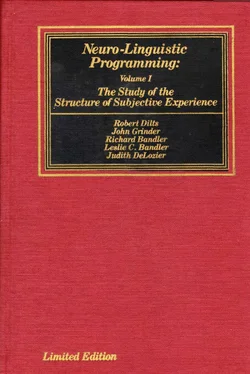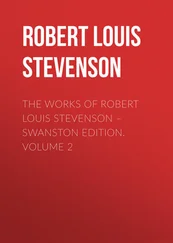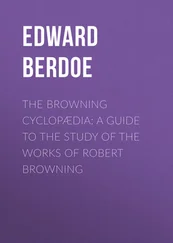In one workshop one of the authors noticed that a participant had a primarily auditory recall strategy. She was asked to recall a song that she was particularly fond of, which she did easily and readily. The author anchored the song with a finger gesture (subtly moving the finger as if directing an orchestra). Because the woman was tuning in to her internal auditory system her external visual experience was outside her awareness. The woman was then asked what her home address was. She quickly supplied the answer. Immediately after she finished saying her address she was asked to repeat it. This time, however, the author fired off the anchor for the song. For a full thirty seconds the woman could not answer the question — until the music stopped. She was very confused at what caused the difficulty, even though she knew it had something to do with the song. The process was repeated several times for other simple tasks, such as remembering her phone number, children's names, etc., until she was finally made aware of the visual anchor.
Demonstrations like these often bring up the question of the negative aspects of manipulation: an important issue. We, of course, urge you to use your full discretion in using and applying the information we are providing in this book. We want to remind you, however, that these utilizations are influence tactics and do not magically "make" people do things — especially things that they don't want to do. As Milton H. Erickson, M.D., (one of the persons from whom this model was derived) said, "If I could make people do things that they didn't want to do, there would be a lot more well people in this world today."
We suggest you keep in mind that the events and procedures we are describing here are constantly occurring all the time in our everyday lives. Most people just aren't aware of them. An excellent example of this can be seen in a film about Carl Rogers, a man who epitomizes non–manipulative, client–centered therapy. In one portion of the film Rogers is "feeding back" to the client a statement that she made of a conflict she was having (we will refer to the two aspects of the conflict as X and Y). Paraphrased, the interaction goes something like this:
Rogers: I understand you have this choice X (gestures with left hand) … and you have this choice Y (gestures with right hand) … Now I don't know which one (gestures with left hand) you will choose, but I'm sure it will be the one (gestures with left hand) that is best for you… .
The client, not surprisingly, decided to go for choice X (anchored by the gesture with the left hand). Certainly, though, Rogers had no conscious intention of influencing the client's decision in that way. Perhaps at an unconscious level he chose which way would have been best for himself, a choice revealed by his hand gestures. Both Rogers and the client were so tuned to the auditory external (and probably kinesthetic internal) portions of the ongoing communication that neither of them were conscious of the subtle gestures picked up through the external visual system.
It is not possible to prevent these kinds of subtle anchors, nor would it be useful as the more powerful channels of communication are those nonverbal channels which lie outside of awareness. If you consciously attempt to avoid anchoring with your hand gestures and words, you may begin to anchor instead with your breathing, tonality or facial expression at the unconscious level. If you pay attention to these variables in an attempt to stop them, you will lose track of others that will communicate your unconscious decisions. It is better that these subtleties be brought out in the open than to remain hidden in such a way that people become victims of their own (and others') unconscious processes. You cannot not influence someone.
In cybernetics there is a principle known as the law of requisite variety. This law states that in any connected interactive system, the element that has the widest range of variability in behavior will be, ultimately, the controlling element. [23] The exact formulation is given by W.R. Ashby in Introduction to Cybernetics (1956), p. 206 and p. 245. The generalized form offered in the text assumes no element has a structurally dominant position.
No matter what field you are in, you will probably have come to the realization that the top people in that field are those who have the most variety in their behavior, those who have choices of behavior that their colleagues don't have. Any time you limit yourself with regard to some choice of behavior, you are working against yourself and letting others get the competitive edge. The objective of NLP is to provide the human species with more behavioral choices. We believe that the more choices and possibilities the members of our species become aware of and make available to themselves, the more we will advance as a whole.
The greater your ability to respond to any situation in a variety of ways, the more effective you will be at utilization and at getting the outcomes you want.
4.4 Ideas and Examples: Areas of Application for Strategy Utilization
In the following subsections we will show how the material discussed thus far in this book may be applied to different fields to expand the possibilities for their growth and development. Obviously the examples we have selected represent particular options for utilization that could be expanded upon or reorganized in a variety of ways. By applying your own strategy for creativity when you go back through this book to review and outline procedures useful in your field, you will obtain a unique pattern specifically oriented for your own purposes of strategy utilization.
The field of education is an obvious place to start, as the establishment of synesthesia patterns, strategies and anchors is precisely what the process of learning is about, not only in the classroom but in interactions among teachers themselves, between teachers and parents, teachers, administrators and school board members, district school officials and personnel in each state office of education, and so on, up to and including interactions with the Department of Health, Education and Welfare at the federal level. Learning is a lifelong process, and although we will concentrate on classroom learning in this subsection, you can easily apply your imagination to the enormously positive potential inherent in using NLP in exchanging and enhancing teaching strategies, troubleshooting personnel problems, settling salary negotiations, harmonizing with parents and parent organizations and so forth.
For teachers, one important application of strategy utilization is to pace students' learning strategies in the classroom. By identifying the steps through which a student naturally incorporates new information and behavior, and by presenting the material to be taught in that form, teachers can greatly facilitate the learning process. Through adapting information to the representational systems with which a student is most adept, a teacher utilizes the student's natural skills and resources most effectively, whether at the kindergarten or college level.
For example, an electrical engineer in one of our workshops, who primarily used internal kinesthetics in his strategies, described how learning to read electrical schematics was at first very difficult and boring for him. He had a hard time making sense out of the mass of lines and symbols he saw in his textbook. He couldn't "connect" with them and found circuits extremely difficult to interpret until one day he began to imagine what it would feel like to be an electron floating through the circuit he saw diagrammed in front of him. He would imagine his various reactions and changes in behavior as he came in contact with the various components in the circuit, symbolized by visual characters on the schematic. The diagrams immediately began to make more sense to him and even became fun to figure out and to design. Each schematic presented him with a new odyssey. It was so enjoyable, in fact, that he remained with electronics and went on to become an engineer — all because he found a way to utilize his strategy effectively in the learning process.
Читать дальше











